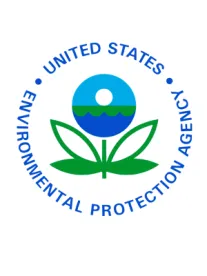On December 18, 2017, the U.S. Environmental Protection Agency (EPA) announced it is releasing for public comment the draft human health and ecological risk assessments for glyphosate. EPA’s Draft Human Health and Ecological Risk Assessments for Glyphosate website states that the “draft risk assessments and supporting documents will be available in glyphosate’s registration review docket EPA-HQ-OPP-2009-0361 on www.regulations.gov in early 2018,” and that EPA will “open a 60-day public comment period for the draft risk assessments, evaluate the comments received, and consider any potential risk management options for this herbicide.” Many of the assessment documents, including the draft human health risk assessment, are already available on EPA’s website, but not yet posted in the docket.
The EPA announcement includes the following summary of EPA’s determinations:
- The draft human health risk assessment concludes that glyphosate is not likely to be carcinogenic to humans. The Agency’s assessment found no other meaningful risks to human health when the product is used according to the pesticide label. The Agency’s scientific findings are consistent with the conclusions of science reviews by a number of other countries as well as the 2017 National Institute of Health Agricultural Health Survey.
- EPA’s human health review evaluated dietary, residential/non-occupational, aggregate, and occupational exposures. Additionally, the Agency performed an in-depth review of the glyphosate cancer database, including data from epidemiological, animal carcinogenicity, and genotoxicity studies.
- The ecological risk assessment indicates that there is potential for effects on birds, mammals, and terrestrial and aquatic plants. EPA used the most current risk assessment methods, including an evaluation of the potential effects of glyphosate exposure on animals and plants.
EPA states the proposed interim registration review decision for glyphosate is scheduled to be published in 2019.
Commentary
This latest EPA announcement is consistent with other determinations concerning glyphosate made by EPA in recent years, including statements made during the Obama Administration. EPA presented its analysis of the carcinogenic potential of glyphosate to the Federal Insecticide, Fungicide, and Rodenticide Act (FIFRA) Scientific Advisory Panel (SAP) in December 2016. EPA has consistently taken the position that the human health risks from glyphosate are low, and that food and water residues of glyphosate easily satisfy the requirement that they be “safe” for human consumption.
Critics of glyphosate use often focus on the widespread adoption of glyphosate-resistant bioengineered crops. If these genetically modified organism (GMO) crops were not specifically designed for use in conjunction with glyphosate, there would likely be much less discussion about the safety of the herbicide.
Because EPA’s announcement includes a statement that “there is potential for effects on birds, mammals, and terrestrial and aquatic plants,” critics of glyphosate and the associated GMO crops will likely continue to press for restrictions based on the ecological effects of glyphosate. Moreover, there is also likely to be continued controversy concerning the human health effects of glyphosate. Notwithstanding the human health safety findings in this EPA assessment and the other assessments cited in EPA’s statement, the International Agency for Research on Cancer (IARC) has classified glyphosate as “probably” carcinogenic to humans. It is thus probable that the controversy concerning glyphosate and the associated GMO crops will continue unabated.



 />i
/>i

